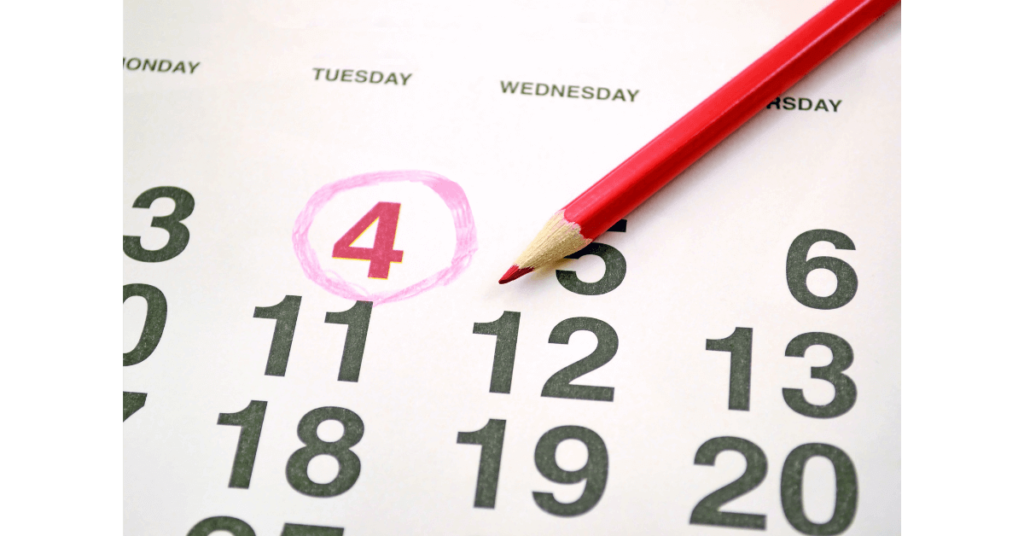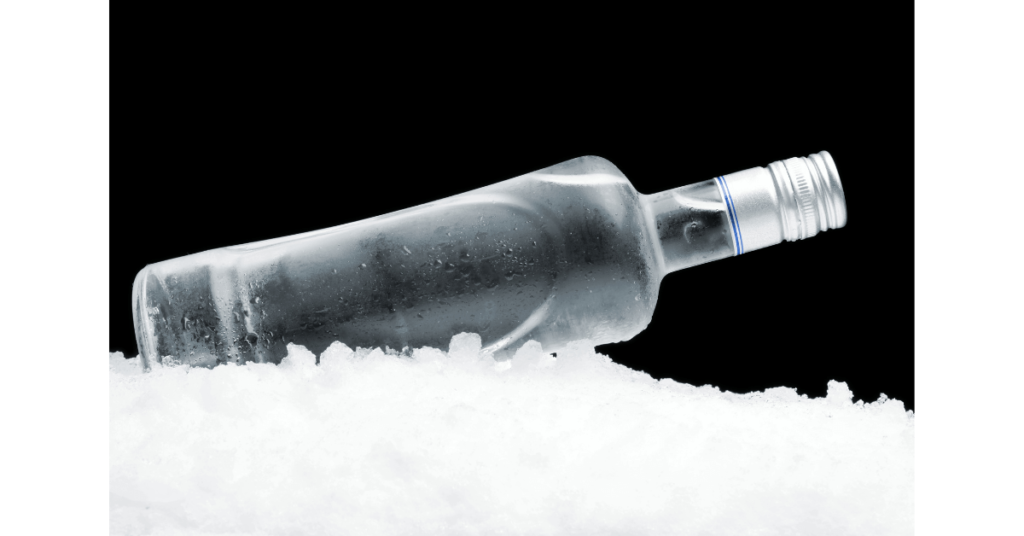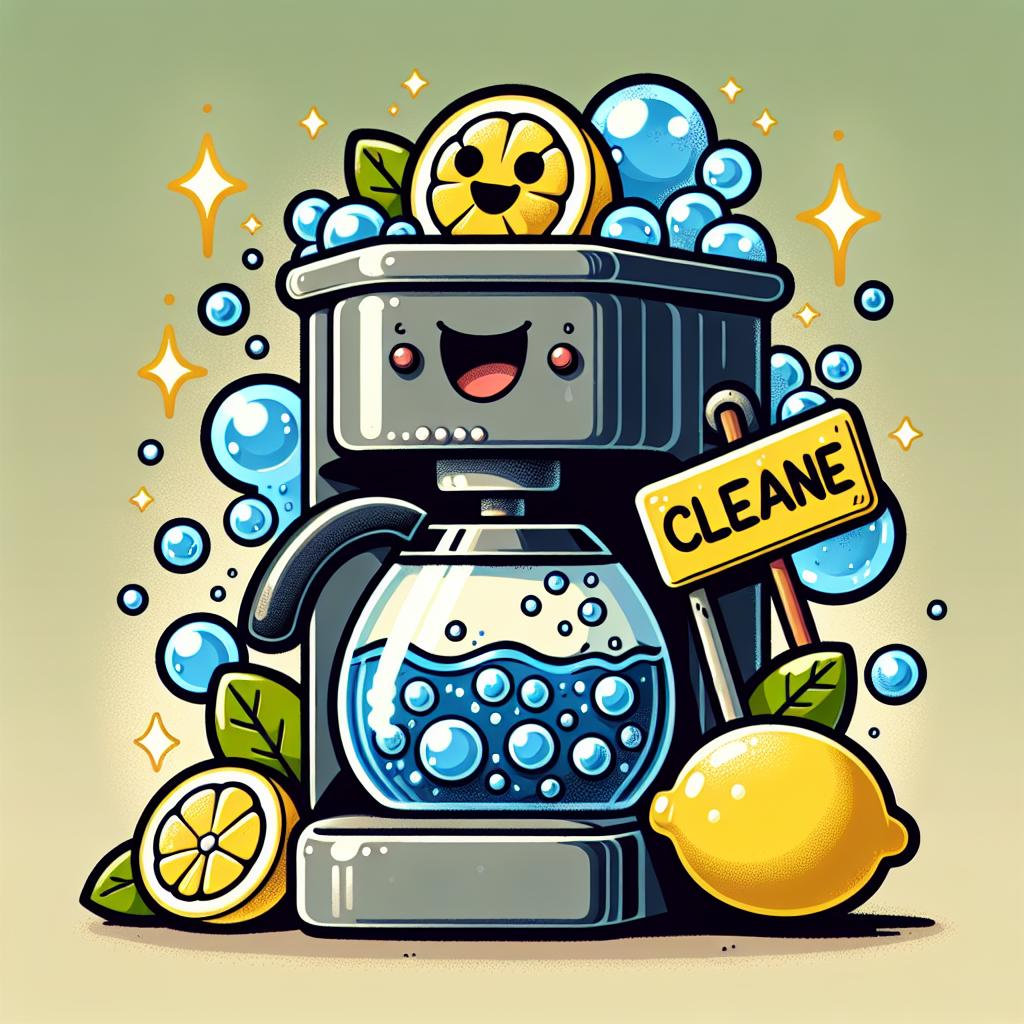This post may contain affiliate links. Please read my disclosure for more info.
While vinegar is a top choice for cleaning coffee makers, it’s handy to learn other methods too. Why? Let’s explore how to clean your machine without vinegar.
Ever find yourself without vinegar for cleaning? Or maybe you’re not a fan of its strong scent filling your space. Lemon can be a refreshing alternative. Smells better, don’t you think?
Discover why vinegar is your go-to for cleaning your drip coffee maker. Learn the key differences between cleaning and descaling, and get easy steps to clean your machine with vinegar or other handy alternatives.
Why You Should Clean Your Coffee Maker
First off, it’s important to know that daily cleaning isn’t enough for your coffee maker. Sure, you should rinse the carafe, wipe up any messes, and toss out used grounds right after each use. But, there’s more to it than just that.
Every day, the water in your coffee maker leaves behind mineral bits. Even if you use filtered or distilled water, some minerals still stick around. Plus, any part touching the coffee or grounds might get coated with oily leftovers or catch some stray grounds. It’s all part of making your daily brew!
Old coffee buildup can make your fresh brew taste stale. To enjoy the true, fresh flavor of your coffee, it’s essential to clean your coffee maker thoroughly.
When oil mixes with water, it becomes a breeding ground for bacteria, mold, mildew, and other harmful growths. Shockingly, a study by the National Science Foundation in 2011 found that half of all coffee makers might harbor mold or yeast in their water reservoirs. Check out the full report here for more details.
Cleaning your coffee maker not only makes your coffee taste better but also boosts your health. Regular deep cleans are a win-win!
How Often Should You Clean Your Coffee Maker?

How often you use your coffee maker, how well and quickly you clean it each day, and the type of water you use can affect how often it needs a deep clean. You should aim to clean it at least once a month. But, if your coffee starts tasting bitter or different, it might be time for a quicker cleanup.
What is Descaling a Coffee Maker?
Descaling is like giving your coffee machine a deep clean. It’s all about getting rid of the buildup from minerals like magnesium and calcium, which are in all types of water. These minerals can gather in the tank and pipes of your coffee maker. If your water is hard, meaning it has more minerals, you’ll need to descale more often.
How to clean a coffee maker with vinegar
Vinegar is a popular choice for cleaning coffee makers. It’s budget-friendly and usually already in your kitchen. Plus, it’s safe to ingest, eliminating worries about leftover residue in your machine or pot. Perfect for keeping your coffee tasting great!

Did you know vinegar is a coffee maker’s best friend? Its acidity helps it remove those stubborn hard water spots and even zaps bacteria and mold. So, with just vinegar, you can descale and clean your machine. Pretty cool, huh?
The method is super simple! I’m sharing it because we’ll follow a similar approach for many of the vinegar substitutes mentioned below.
- Make a vinegar solution — Mix 1/2 white vinegar and 1/2 warm water together. You should make enough of this mixture to fill the reservoir of your coffee maker.
- Fill the water reservoir — Pour the vinegar mixture into the water reservoir and let it sit for 30 minutes.
- Brew halfway — Run the coffee maker until half of the vinegar has passed through the machine.
- Wait — Let it sit for at least 30 more minutes, preferably an hour.
- Finish the cycle — Run the coffee maker again, letting the rest of the vinegar run through.
- Empty the carafe — Pour out the carafe. You can safely dump the used solution down the sink.
- Rinse the coffee maker — Fill the water reservoir with water (no vinegar this time) and run it through the coffee maker. Do this with at least 3 reservoirs full of water, more if there is any leftover vinegar smell. I like to run it at least 5 times to be sure.
How to Clean a Coffee Maker Without Vinegar
If you’re out of vinegar or can’t stand its strong scent, don’t worry! There are other ways to clean or descale your coffee maker without it.
For fancier coffee machines like smart coffee makers, Keurigs, Nespresso, and both high-end and more affordable espresso machines, stick to the cleaning instructions. Other cleaning methods are usually not safe for them. However, if you own a simple drip coffee maker, these alternatives should be okay to use.
The first few tips are gentle, using natural or soft alternatives. The last ones are strong, so it’s best to skip them if possible.
Descaling solution
Commercial descaling solutions, packed with special acids, are perfect for cleaning coffee and espresso machines. They work even better than vinegar! If vinegar isn’t cutting it, switching to a descaling solution might just do the trick in keeping your machine spotless.
Nespresso and certain espresso machines recommend using only their descaling solution. They warn that using other cleaners could cancel your warranty.
Lemon juice

Lemon juice’s mild acidity makes it a great swap for vinegar to clean your coffee maker. Just use it the same way you’d use vinegar, but you don’t have to mix it with water. Plus, your kitchen will smell fresh and lemony, not like vinegar.
Dish soap
If you’re using a basic coffee maker and don’t mind a little DIY, this tip’s for you. Take apart your coffee machine and gently wash each piece with soap and warm water. Make sure everything gets a good rinse. When you reassemble it, run a few water-only cycles before making coffee. This ensures no sneaky soap suds end up in your brew. Simple steps for a cleaner coffee experience!
Cleaning your coffee maker might seem easy, but it’s crucial. Make sure to wash all parts that touch water, coffee, or grounds. If not, you could end up with unwanted buildup or germs in your machine. Keep it clean for the best coffee experience!
Salt and ice water
Need a quick fix to descale your coffee machine? Mix crushed ice with table salt and you’ve got an emergency descaling solution. Gently rub this mix onto the machine’s parts with a cloth, then rinse everything off well. It’s that simple!
Dish soap alone won’t fully descale your coffee maker, and you’ll need to disassemble the machine for a thorough clean. Use this method together with descaling for a spotless coffee machine.
Baking soda
Did you know you can clean your coffee maker with baking soda? It’s easy! Just mix 1 part baking soda with 4 parts water and pour it into the reservoir. This method is great for cleaning, but remember, it’s not for descaling. Follow the same steps as you would with vinegar.
Denture tablets
Denture tablets, surprisingly, are made of baking soda and citric acid. If you’re out of lemon juice or baking soda, you can use these tablets instead. Just pop a couple into your water reservoir and run it as if you were using vinegar. It’s a simple trick for a clean coffee maker!
Alka Seltzer
Alka Seltzer’s magic ingredients, citric acid and baking soda, act like super cleaners for your coffee maker. Pop a couple of tablets into the water compartment and let it run through, just like you’re making coffee with vinegar. It’s that simple!
Alcohol

Alcohol fights germs, making it great for cleaning your coffee maker. Simply mix 1 part hard alcohol with 3 parts water, and run it through your machine like you would with vinegar. Vodka is a top choice for this task. It’s affordable and doesn’t leave behind any strong smells. This easy trick helps keep your coffee tasting fresh and your machine in top shape.
Cream of Tartar
Want to clean your coffee maker naturally? Mix 1 tablespoon of cream of tartar with 4 cups of water. This combo, like vinegar or lemon juice, tackles buildup. Just pour it into the water reservoir and run it through as usual. Easy and effective!
Hydrogen Peroxide
Just like using vinegar, you can mix one part hydrogen peroxide with two parts water for cleaning. Follow the same steps you would with vinegar. Remember, everything we mention next is stronger, so it’s best to stick with these gentler options if you can.
Borax
Did you know that borax, a handy cleaner you might already have, can clean your coffee maker too? Swap out vinegar for a mix of a few tablespoons of borax and water. Just remember, borax isn’t safe to drink, so run plenty of water cycles through your machine afterward to make sure it’s completely rinsed out.
Bleach
Using bleach to clean your coffee maker should be your last option. It’s strong and can be harmful. However, if you’ve tried everything else and your coffee maker still isn’t clean, a diluted bleach solution can help. Just remember, never pour undiluted bleach directly into it, as this can damage your machine.
For a deep clean, mix 2 tablespoons of bleach with 4 cups of water and add it to the reservoir. Just like with vinegar, follow the same steps afterwards. But, remember to run multiple water cycles to ensure all the bleach is completely gone.
CLR
Just like bleach, CLR is your backup plan for a deep clean. It’s fantastic for getting rid of buildup when you’re in a pinch. Remember to be careful, just as with bleach. Mix 1 part CLR with 8 parts warm water, then do what you’d do with vinegar. Don’t forget to run lots of water cycles after to wash away any harsh chemicals.
Muriatic acid
Bleach and CLR are your final options, but there’s an even more limited last-ditch effort to try. Use it wisely!
Never pour muriatic acid directly into your coffee maker; it’ll damage it. But, if you’ve got removable parts that are really dirty and nothing else works, you can use a diluted mix of muriatic acid (always add acid to water, not vice versa). Just make sure to dilute it correctly and wear the right safety gear to protect yourself.
What about cleaning the outside of your coffee maker?
I’ve mainly talked about cleaning inside the coffee maker. It’s the trickiest part, collecting the most oil and hard water stains.
Just like any kitchen gadget, your coffee maker’s exterior needs regular cleaning. But, how you clean it depends on its material – cleaning plastic isn’t the same as stainless steel. Make it part of your routine kitchen tidy-up to keep it looking great and working well.
Enjoy Your Fresh Coffee!
If it’s been ages since you last cleaned your coffee maker, prepare for a big change in your morning cup! Think of it as changing from stale to wonderfully fresh. Cleaning it well means your next brew will taste clearer, less bitter, and richer in flavor, unlike the taste from a machine clogged with minerals. If your coffee doesn’t taste better after cleaning, the issue might be with your coffee itself—it could be past its prime.
While vinegar or a descaling solution is usually my go-to for cleaning coffee makers, it’s smart to learn how to do it without vinegar. You never know when you might run out! Let’s explore some alternative cleaning methods for those just-in-case moments.
Got a cool trick for cleaning your coffee maker? Share it below!



